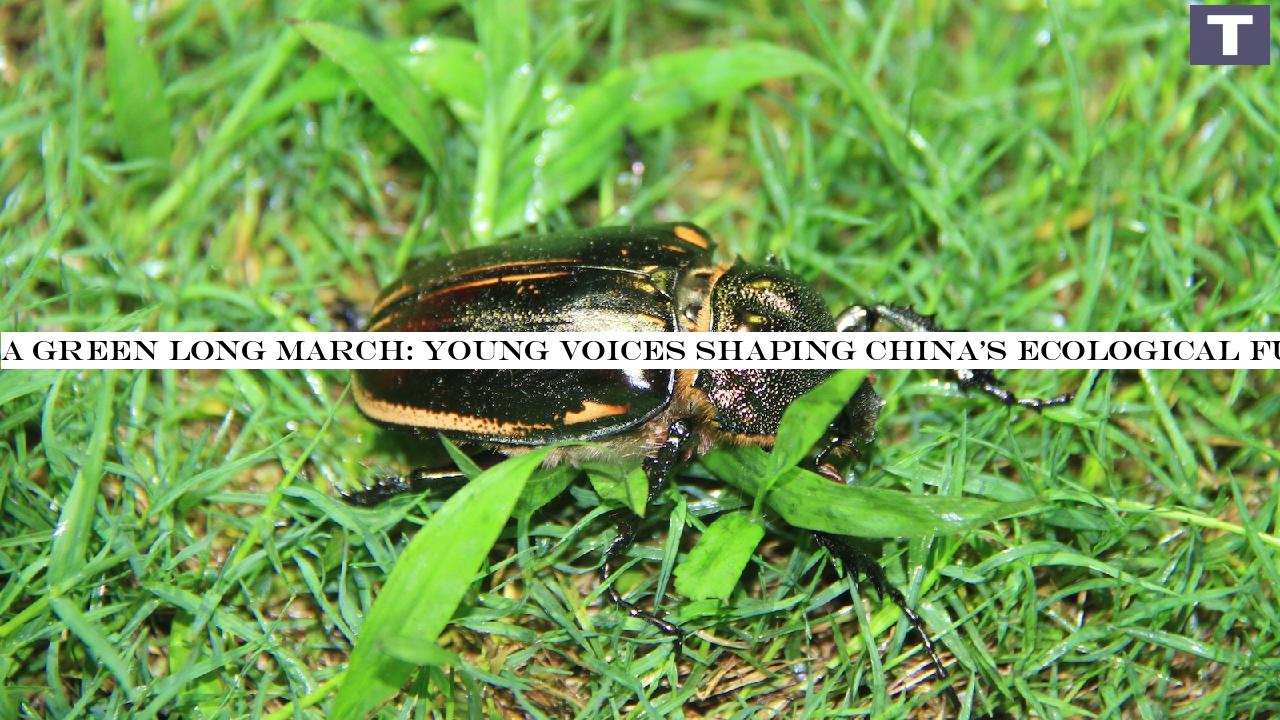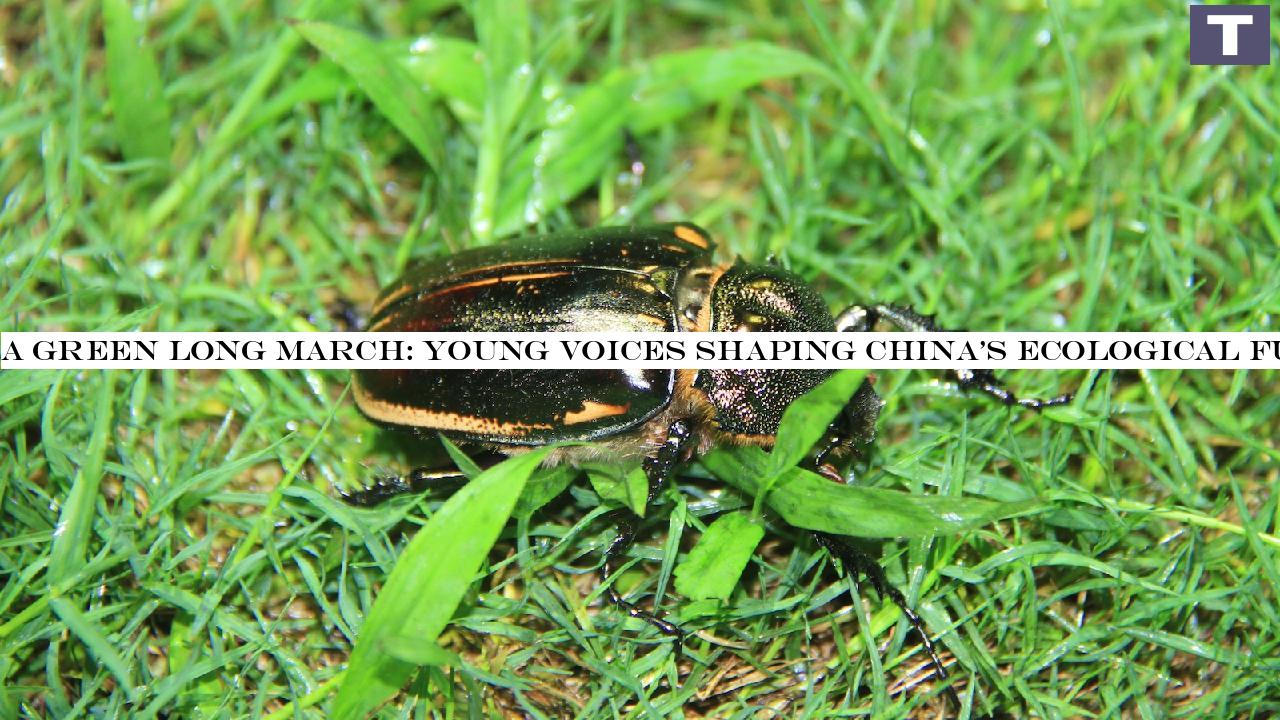
On April 20, more than 30 eco-themed tents lined the banks of Beijing's Wenyu River Park at daybreak, forming a vibrant "green bazaar." Organized by over 30 student associations and environmental groups, the event marked the launch of the "Beautiful China Youth Action" Green Bridge and Green Long March activities.Through interactive workshops, eco-conscious handicrafts and sustainability-themed quizzes, more than 5,000 local residents and visitors engaged in hands-on activities promoting environmentally friendly practices.A 40-year legacy of green action: From 'green consultation' to the 'green long march'The scene evokes memories of 1984, when students from Beijing Forestry University (BFU) pioneered China's first campus-led "Green Consultation" on the streets of Beijing, planting the seeds of youth environmental engagement.
Over the decades, their efforts have evolved into the Green Bridge and Green Long March Activities now recognized as flagship programs for China's eco-conscious youth.From tracing ecological shifts along the Yellow River to combating desertification on the ancient Silk Road, student expeditions have reached every corner of China, aligning each year's theme with the nation's ecological priorities.This year, BFU launched the 2025 Green Bridge and Green Long March initiative.
The Green Long March a nationwide ecological research campaign led by university students will mobilize nearly 10,000 participants from over 1,000 groups to conduct field studies across seven core ecosystems: mountains, waters, forests, farmlands, grasslands, lakes and deserts.Going beyond ecological research, the activities weave together technological innovation, environmental education, cultural promotion and rural revitalization.
This year's program includes the second National Youth Green Innovation Competition, aimed at sparking sustainable thinking among young participants.
Curated eco-courses and hands-on projects are designed to instill lasting environmental awareness.Creative expressions also take center stage from poetic dance performances to youth-led lectures while practical "Green Consultation" initiatives channel expertise into rural development projects."Through grassroots research, we not only support local conservation but also improve our expertise," said Wang Yan, a junior from the School of Landscape Architecture at BFU.
"These initiatives channel youth passion into collective action, inspiring broader public engagement in sustainability."Guardians of the wild: Student expedition rediscovers 'extinct' beetleAs part of BFU's "A4210 Green Long March" program, Wang and his teammates traveled to Laojun Mountain in southwest China's Sichuan Province in 2024.
They spent two weeks conducting bamboo pest control research, biodiversity surveys and conservation outreach in the 1,600-meter-high nature reserve.Despite unstable power supplies and treacherous mountain trails where members endured falls and exhaustion the team pressed on.
Their repeated treks into the dense forest revealed tracks of black bears, wild boars and the nationally protected red-bellied pheasant.While conducting nocturnal light-trapping experiments, the group discovered the iridescent Cheirotonus jansoni, a beetle species under China's second-class state protection.
Experts later confirmed it was the first recorded sighting in the area since the species was presumed extinct there more than 40 years ago.This discovery not only underscores the rich biodiversity of the reserve and the progress of China's ecological conservation efforts, but also showcases how Chinese youth are becoming key drivers of sustainable development.Tech-powered farming: BFU students uncover hidden threats in pepper fieldsDuring the summer of 2024, while many of their peers went on vacation, members of the "Youth Empowerment for Rural Revitalization" research group from BFU returned to their hometown in Huize County, southwest China's Yunnan Province, to help local farmers tackle widespread pepper crop failures.
Nearly 60 percent of the crops had been hit by pest infestations, causing a 20 percent drop in yields.Braving the scorching sun, the students carried out a systematic analysis of 36 chili varieties, documented diseased leaves, collected soil samples, and explored agricultural solutions like artificial pollination and drone irrigation.The group has sent the diseased plant samples to Beijing for lab analysis and has reached a preliminary cooperation agreement with a local pepper farm in Huize."Initially, we just wanted to contribute to our hometown's development the goal was simple.
But when our findings resonated with the local government, we realized our work could have a real impact.
What we learned from textbooks has now transformed into a responsibility our mission to protect the environment," said Pang Xin, the group leader and a junior from the College of Biological Sciences and Biotechnology at BFU.Watershed protection: 70 years of youthful dedicationIn Tiansi Village, located in western Beijing, BFU's "Jingxi Yongding" Green Long March group conducted research on flood-damaged areas, assessing tree distribution and the risk of tree falls to guide post-flood ecological recovery.This region is a testament to decades of BFU's expertise in watershed management.
Guan Junwei, a member of the Chinese Academy of Engineering, pioneered small watershed governance here in the 1950s, creating a model that has shaped generations of researchers.Over the past 70 years, BFU faculty and students have implemented integrated solutions such as check dams, drainage channels and reforestation efforts.
These initiatives have reduced flood risks, increased crop yields, and transformed former floodplains into thriving ecological environments.In 2024, 344 universities and 68 institutions mobilized 10,312 students to carry out sustainability projects, generating 28.47 million media impressions.Over the past 40 years, the Green Bridge and Green Long March Activities have pioneered more than 20 innovative eco-education and volunteer programs, spanning 312 counties and cities, with over 500,000 participants involved in 8,000 events.These efforts highlight how the Green Bridge and Green Long March Activities have become a youth-driven movement for ecological civilization and rural revitalization in China.
Looking ahead, these youth-led initiatives will continue to play a key role in building a Beautiful China through hands-on ecological stewardship and innovation.

 19
19



















